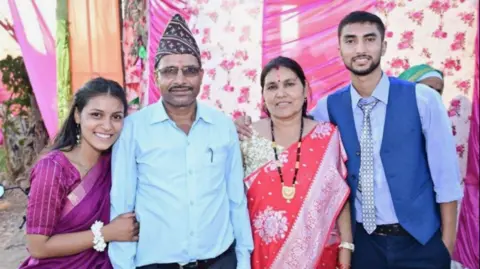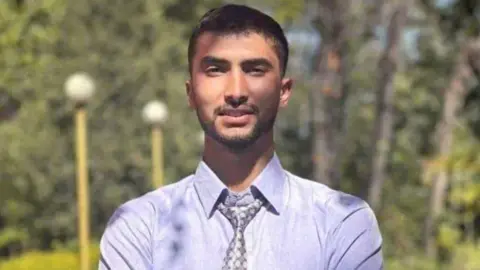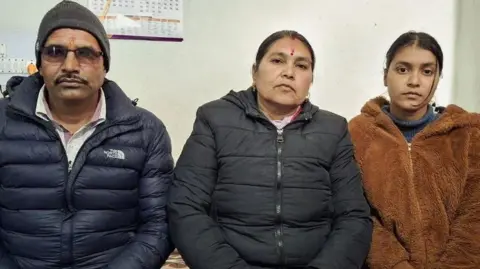The Gaza ceasefire agreement has given rise to hope for the return of the hostage child to Nepal
 A family gift
A family giftIn a village in western Nepal, thousands of kilometers from Israel, Mahananda Joshi sat restlessly at home on Thursday, phone in hand.
The phone is never far from his hand now. And they never shut up. He is waiting for news of his son, Bipin Joshi, a 23-year-old Nepalese agriculture student who was kidnapped by Hamas and taken to Gaza.
Whenever the phone rings, Mahananda, a local school teacher, thinks it might bring news of BP, or – his deepest hope – the boy’s voice on the line.
“Unfortunately, it’s always someone else,” Mahananda said.
Bipin was one of dozens of foreign workers captured with Israelis when Hamas attacked on October 7, 2023.
Subsequently, 24 were released – 23 from Thailand and one from the Philippines – but Bipin and nine others remained.
It was unclear why.
The last time BP’s mother Padma spoke was in 2011. It was October 6, she said, the day before he was kidnapped.
He assured her that he was eating well and showed her the clothes he was wearing.
The next time the family saw him was video footage from al-Shifa hospital in Gaza, which Israeli officials showed them and asked for his identity.
Being taken alive was the proof.
Bibin understands that Bipin is still believed to be alive, but Dan Prasad Pandit, Nepal’s ambassador to Israel, said he still has “no concrete information” about Bipin’s condition and whereabouts.
 A family gift
A family giftMahananda, Bipin’s mother Padma and 18-year-old sister Puspa live in a small one-story white house in Bispuri Mahendranagar village, near the border with India.
As of Thursday, they said they had heard nothing from the officials, only headlines announcing a ceasefire.
The news gave them all new hope.
“I feel that today or tomorrow mom will send me a message that I am free now and will come home immediately,” Padma said.
But relief for Joshi’s family would not be so quick.
“Everything can fall apart.”
Along with the nine foreign workers held hostage, BP is not expected to be released in the first phase. cease fire, Elderly men, women and children are given priority for release.
The fear for the family, when they wait, everything can change.
“Everything can fall apart,” Padma said with tears in her eyes.
The family’s ordeal began on the day of the attack.
Bipin was one of several Nepalese students in a kibbutzim in southern Israel that day, and Mahananda, a teacher at a local school, had called one of them that Bipin had been kidnapped.
At the time, Mahananda knew nothing about the Hamas attacks or the situation in Israel, and struggled to make sense of what he was hearing.
It was later reported that 10 Nepali students were killed and one – his son – was taken hostage in the attack.
That sense of disconnect has continued for 15 agonizing months, Mahananda and Padma said on Thursday.
The pain for each of the hostages’ families was great, but for some who were far from Israel, there was an added sense of isolation.

“It was a very lonely experience,” says Mahananda.
Mr. Pandit, Nepal’s ambassador to Israel, told the BBC that he regularly met with the family and visited the village.
Mahananda said that at the beginning of the war, the family received many visits from the authorities, but as it dragged on, they were left alone.
“After the new ceasefire, no one could see or talk to us.”
Everything we know comes from the news.
Isaac Herzog, the spokesman for the Israeli president’s office, who has been working with the families of the hostages for the past 15 months, said that he is working hard to release all the hostages, whether they are Israelis or foreigners. .
For some families, the news of the ceasefire gives hope that their 15-month ordeal will come to an end and they will be able to see their loved ones again within weeks.
For others, like the Joshis, any hope must be dashed.
If they have to wait longer, the ceasefire may fall apart.
Speaking at Bispuri’s Mahendranagar home on Thursday, BP’s sister Puspa was holding a picture of her brother.
Tears filled her eyes as she talked about coming home. She was sure it would.
“And when I saw him again, I hugged him,” she said. “And cry.”


